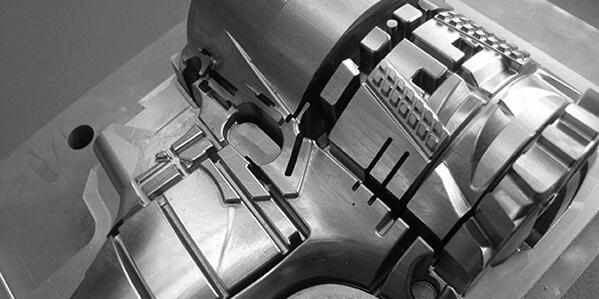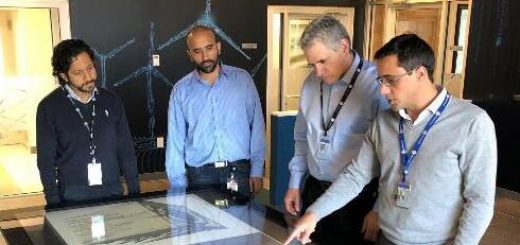Hybrid Additive Manufacturing Speeds Production Of Conformal Cooled Tool Inserts
Speed is of the essence in the production of injection moulded components. Manufacturers need to get their designs from concept to production as quickly as possible. Moulders also need to achieve the shortest possible part production cycle times to maximise productivity and keep unit costs down.
The manufacture of mould tools suitable for the high-volume production of complex parts is a time-consuming process; lead times of up to four months between design sign-off and first part production are not uncommon. Moreover, the performance of a tool determines the cycle time, quality and overall productivity of the moulding process.
![]() Conventional Cooling Channels
Conventional Cooling Channels
Conventionally, these cooling channels are drilled through the mould material during tool manufacture; and while this approach is simple, where the part geometries are more complex, it can be difficult to run straight cooling channels close enough to the mould cavity for efficient heat transfer.
A further complication arises when cooling channels have to compete with certain features for space within the tool. Illustrative of this is the production of box shapes, where the best position for the ejectors is usually at the more structurally strong corners. Unfortunately, these points are also the hardest to cool and even minor shrinkage at the corners of a box due to inadequate cooling can lead to significant distortion of adjacent walls.
Sometimes, it is impossible to provide a straight cooling path through the tool and often requires elaborate workarounds during tool manufacture. These all add cost and complexity to the mould making process, while some mould features may be too small to accommodate them altogether.
![]() Conformal Cooling
Conformal Cooling
The ‘conformal cooling’ approach has been around for a long time, but it is rarely used in production applications, as there is significant manufacturing complexity involved in building the tools.
Using conventional subtractive machining, conformally cooled tools require moulds to be created in laminations. The cooling channels are machined into the surface of these laminations, which are then stacked on top of each other to create the finished tool. The technique adds significant time and cost to the toolmaking process; it can also result in less durable tools and does not provide a solution for all part geometries.
More recently, additive manufacturing technologies have provided an alternative method of incorporating conformal cooling channels in plastic injection moulds. Direct metal laser sintering allows the formation of complex shapes from powder metallic materials, enabling channels of almost any shape to be incorporated into a design.
![]() Hybrid Additive Manufacturing
Hybrid Additive Manufacturing
There is now a new technique which promises to overcome some of the barriers that have prevented the wider uptake of conformal cooling by the industry. Combining additive manufacturing and conventional CNC machining technologies, we can build steel mould tools complete with conformal cooling channels layer by layer using a laser.
As each layer is deposited, an automated secondary CNC machining process removes excess material to provide a dimensionally accurate, fine surface finish. The material produced by this process is hard enough to meet the needs of many production applications without subsequent heat treatment.
Cooling channel designs are able to make optimal use of the capabilities offered by this process. For example, as well as allowing cooling channels to take any route through the tool, the process also removes the necessity for those channels to be round. Elliptical, rectangular and even teardrop designs can maximise heat transfer for a variety of applications. Moreover, special ‘trip’ features can be incorporated within the channels to promote turbulent coolant flow which increases the heat transfer rate.
The technology developed to manufacture complex conformal cooling channels, which can significantly improve the in-mould cooling of complex parts, not only boosts part quality but can also cut moulding cycle times by up to 20%.
Source: OGM




Recent Comments